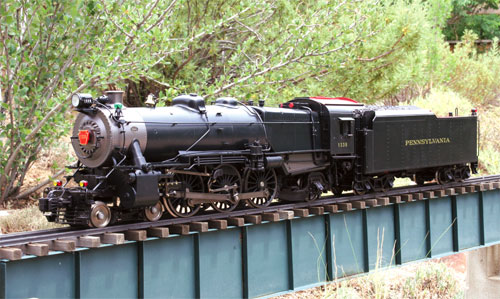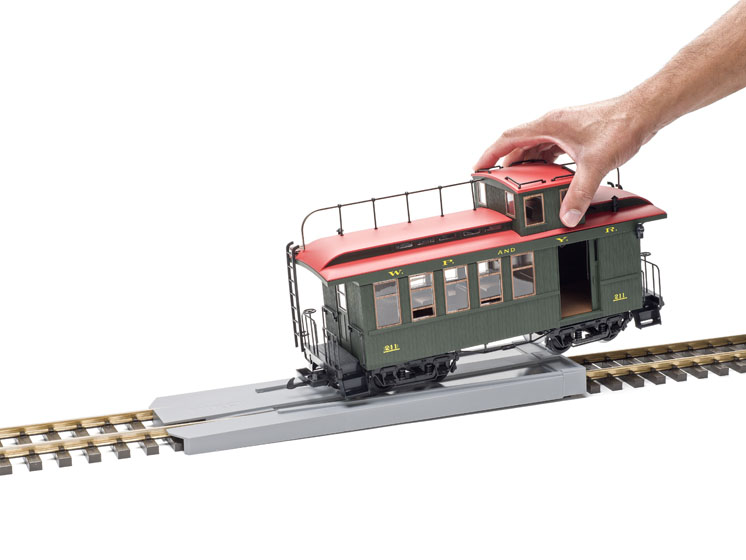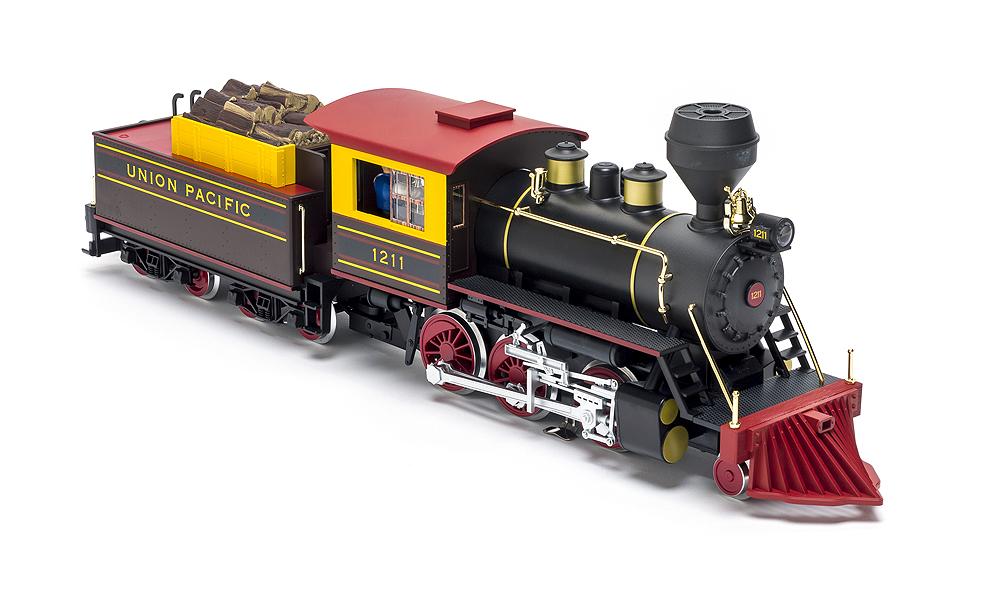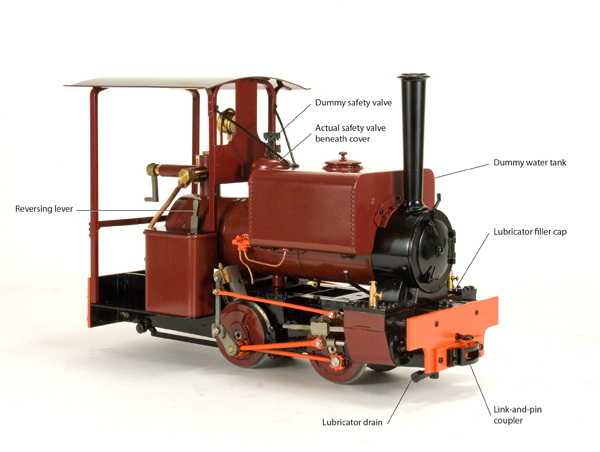1:29 scale, gauge 1, Pennsylvania K4 Pacific
American Mainline (AML)
33268 Central Avenue
Union City CA 94587
Price: $1,949
Web site: www.accucraft.com”
All metal, electrically powered model of Pennsylvania Railroad K4 4-6-2; lighted classification lights; directional headlight; sound ready; smoke-unit ready; 12 electrical pickups; three drawbar positions; independent, ball-bearing wheels on tender; sprung trailing truck; sprung tender trucks; cab-interior detail; double-helical gear drive; motor on-off switch; smoke-unit on/off switch; electrical distribution board in tender; instructions. Dimensions: Length (loco and tender), 37″; width, 4½”; height, 6¾”. In 1:29 scale, this works out to 89’5″ x 10’10” x 16’4″, respectively. Weight: Locomotive, 18 lb., 12 oz; tender, 6 lb, 6 oz. Tractive effort at full slip, 4 lb, 2 oz., or enough to pull around 52 standard freight cars on straight, level track
Pros: All-metal construction; high level of detail; excellent paint finish; excellent graphics; exceptionally smooth operation; powerful hauler; good slow-speed response; high fidelity to prototype; free-rolling tender
Cons: Tender wheels as much as .040″ out of gauge; flanges a little too deep
AML (an imprint of Accucraft) has produced a beautiful model of the K4 that is faithful to the prototype, the scale/gauge disparity notwithstanding. While our sample was not supplied with amenities, the engine can be readily fitted with an after-market sound system, a smoke unit, and/or DCC. It is equipped with a double-helical drive system, with the motor in the firebox. An attractive feature of this system is the fact that the engine doesn’t seize up when the power is turned off. It still rolls easily when pushed.
A three-position drawbar joins the engine to the tender. Only the closest position provides prototypical spacing, but very wide-radius track is required for the engine to function well at this spacing. However, it is at this spacing that the unit looks the best. The other drawbar positions help the locomotive around tighter-than-prototypical curves, as do the blind center drivers. These blind drivers, in my opinion, also detract from the appearance of the engine, but I suppose compromises must be made.
There are 12 power-pickup points on the engine and tender. From these the power goes to a distribution board in the tender and then to the motor. To connect the locomotive and tender electrically (the drawbar does not carry power), a multi-pin plug from the tender must be inserted into the engine below the apron in back of the cab. The locomotive is powered by a large Pittman motor driving the center axle via a driveshaft and universal joints. The other two axles are powered by the siderods. The engine is equipped with a directional headlight and all classification lights are lit. The roof vent atop the cab slides open. There’s a switch on one side of the engine to turn the motor on and off, while another on the other side is for the optional smoke unit. Switches in the tender are for the optional sound system. The coal load is easily removed for access to the tender’s interior.
We tested this engine on two different garden railroads. The instructions recommend a 24V power pack rated at least 2.5 amps. The power supply we first used was rated at less than that. The engine, while operating smoothly, did not attain a very high top speed. Aside from that, though, operation was just about all you could ask for: excellent slow-speed performance, smooth acceleration, and near-silent running.
On the next railroad, a large power supply, as specified by AML, was used. Performance improved dramatically, with the engine achieving prototypically high speed. Nine Aristo-Craft passenger cars were easily pulled as the engine glided around the track. It was impressive. This locomotive will go around 4′-radius curves, but it looks like a toy doing so. It really needs a nice, wide radius to stretch its legs.
The tender showed signs of derailing at certain points on the track. This was determined to be due to two causes. The first was that the track was not perfectly level. An engine of this size and weight needs a solid and level track beneath it. The other contributing factor was that the tender’s wheels were as much as 40 thousandths out of gauge, on the wide side. (The locomotive’s wheels were no more than .003″ out of gauge, well within tolerance.) The tender’s trucks are fitted with independent, ball-bearing wheels, which makes for exceptionally free rolling. However, it was these wheels that were out of gauge.
This minor problem aside, this is a fine engine. It looks wonderful and performs very well indeed. Running at speed, coupled to a long string of Aristo-Craft heavyweights, it would look spectacular.














